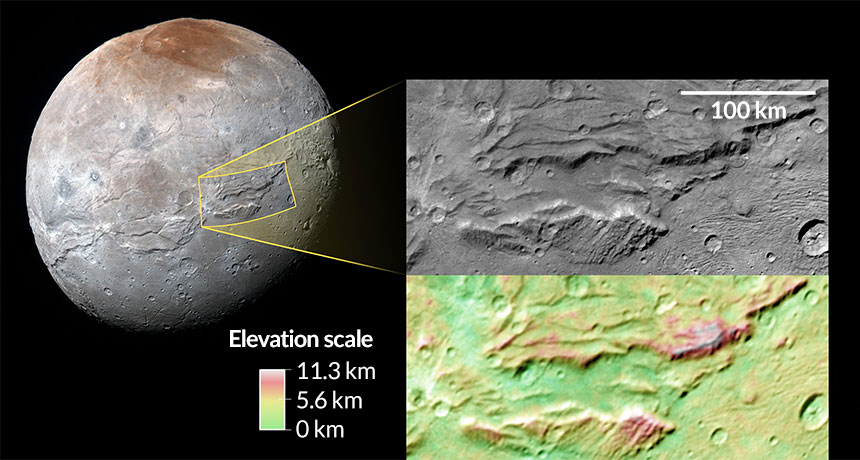Charon’s surface cracked when ancient subsurface sea froze
Chasms on Pluto’s largest moon rival the Grand Canyon — and then some

TORN APART Parts of Charon’s surface, seen in this image from the New Horizons spacecraft, appear to have been pulled apart, possibly by the freezing and expanding of a subsurface ocean.
NASA, JHUAPL, SWRI







